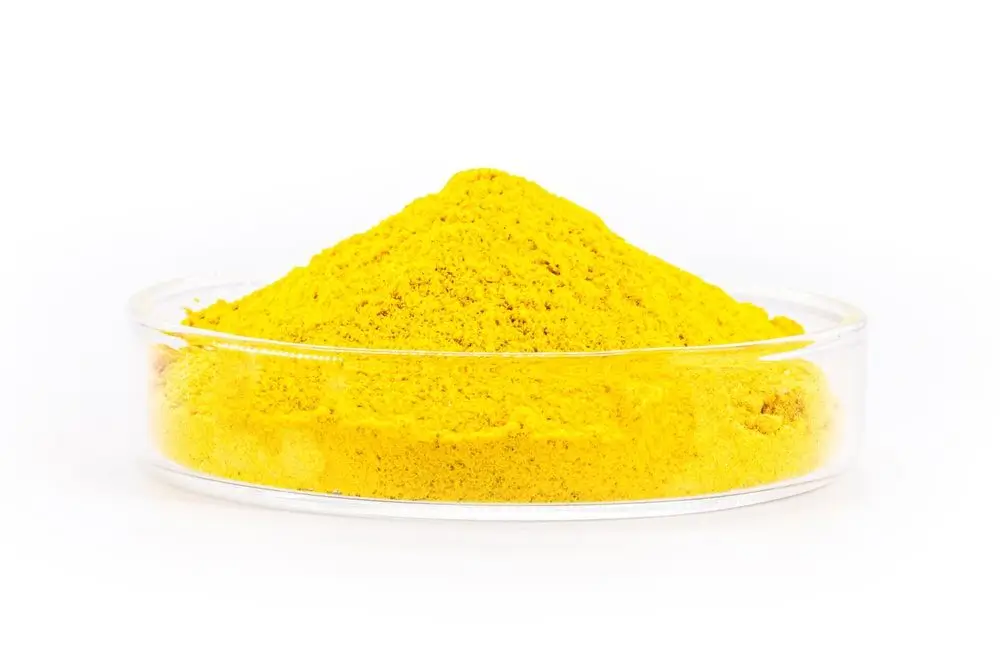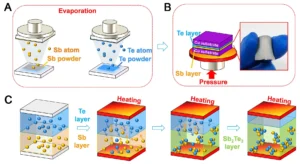Cadmium Sulphide (CdS) is a semiconductor material that has been studied for various applications, including resistive switching (RS) devices. Resistive switching is a phenomenon where the resistance of a material can be altered by the application of an external voltage, making it useful for non-volatile memory devices, logic circuits, and other electronic applications. Here’s a detailed overview of the research and applications of CdS in resistive switching:
1. Introduction to Cadmium Sulphide (CdS)

- Chemical Formula: CdS
- Crystal Structure: CdS typically exists in two main polymorphs:
- Hexagonal (Wurtzite): The more stable form at room temperature.
- Cubic (Zinc Blende): Can be synthesized under specific conditions.
- Band Gap: CdS has a wide band gap, typically around 2.4 eV, making it a good candidate for optoelectronic applications such as solar cells and photodetectors.
- Electrical Properties: CdS is a n-type semiconductor due to the presence of cadmium vacancies, and it can also be doped to alter its electrical properties.
2. Resistive Switching in CdS
Resistive switching refers to the ability of a material to exhibit two or more distinct resistance states (high resistance state (HRS) and low resistance state (LRS)) that can be toggled by applying voltage or current.
- Switching Mechanism: In CdS-based resistive switching devices, the mechanism can generally be attributed to:
- Filamentary Switching: The formation and dissolution of conductive filaments (e.g., metallic filaments of Cd) in the dielectric layer under the influence of an applied voltage.
- Interface Effects: Changes in the Schottky barrier at the interface between CdS and the electrode, which can lead to reversible changes in resistance.
- Oxygen Vacancy Migration (in some cases): Although this is more common in oxides, it has also been studied in chalcogenide materials, which may include CdS.
- Switching Cycles: CdS has been shown to exhibit stable resistive switching behaviour over many cycles, often ranging from hundreds to thousands of switching events, which is important for practical applications.
3. Types of Resistive Switching
- Unipolar Switching: The resistance is switched between two states (HRS and LRS) by applying voltages of the same polarity.
- Bipolar Switching: Resistance switching occurs by applying voltages of opposite polarity (positive and negative), which is typically used in memory devices.
4. Research Findings and Studies on CdS Resistive Switching
4.1 Electrical Characterization
- Current-Voltage (I-V) Characteristics: The I-V curves of CdS-based resistive switching devices usually display non-linear behaviour, with a characteristic “threshold voltage” where the resistance changes from HRS to LRS.
- Set and Reset Voltages: The switching process is characterized by two main voltages:
- Set Voltage: The voltage required to switch from the HRS to the LRS.
- Reset Voltage: The voltage required to switch back from the LRS to the HRS.
4.2 Mechanisms of Resistive Switching in CdS
- Electrochemical Metallization: This involves the migration of metal cations (e.g., Cd2+) under the electric field, leading to the formation of conductive filaments. Upon applying a reverse bias, the filament dissolves, restoring the high resistance state.
- Schottky Barrier Modulation: The interaction between the metal electrode and the semiconductor (CdS) can modulate the Schottky barrier, influencing the resistance switching.
4.3 Materials Engineering for Improved Switching
- Doping: Doping CdS with other elements (e.g., transition metals or rare earth elements) has been explored to improve resistive switching properties such as lower switching voltages, more stable switching cycles, and enhanced endurance.
- Thickness and Morphology: The thickness of the CdS layer significantly influences resistive switching. Thinner films generally exhibit better switching characteristics.
- Electrode Materials: The choice of electrodes (such as Ag, Pt, or Au) can significantly affect the resistive switching behaviour. The electrode’s work function, ion diffusivity, and electrochemical properties influence the device performance.
5. Applications of CdS in Resistive Switching Devices
5.1 Non-Volatile Memory (ReRAM)
- ReRAM (Resistive Random-Access Memory) is one of the most promising applications of CdS in resistive switching. CdS-based devices can store data in the form of resistance states, offering high-speed switching, low power consumption, and high-density storage.
- Cyclability and Endurance: Studies have shown that CdS-based resistive switching devices can maintain stable resistance states over a large number of cycles, making them suitable for memory applications.
5.2 Neuromorphic Computing
- CdS-based resistive switching devices are also being explored for neuromorphic computing, where the resistance switching mimics synaptic behaviour in artificial neural networks. This could lead to more efficient, brain-inspired computing systems.
5.3 Logic Circuits
- Memristive Logic: By integrating resistive switching materials like CdS into logic circuits, researchers are developing new computing paradigms that combine memory and logic functions into a single device.
6. Challenges and Future Directions
- Scaling Down: As the demand for smaller devices increases, scaling down CdS-based resistive switching devices while maintaining performance remains a challenge.
- Stability and Endurance: Ensuring long-term stability and endurance of the switching behaviour under high-cycle and high-stress conditions is crucial for practical applications.
- Low Voltage Switching: Research is ongoing to reduce the threshold voltage required for switching to enable more energy-efficient devices.
- Integration with CMOS Technology: Integrating CdS-based resistive switching devices with traditional CMOS (Complementary Metal-Oxide-Semiconductor) technology is essential for practical applications in large-scale electronic systems.
7. Recent Advancements
- Hybrid Devices: Some research has focused on creating hybrid devices where CdS is combined with other materials, such as transition metal oxides or organic materials, to enhance switching performance.
- Transparent and Flexible Devices: CdS, being a wide-bandgap semiconductor, can also be used in transparent or flexible resistive switching devices, which are highly sought after for wearable electronics and flexible displays.
8. Summary of Key Features for Resistive Switching Applications
- Good Cyclic Stability: CdS-based resistive switching devices demonstrate good endurance over repeated switching cycles.
- Relatively Low Switching Voltage: CdS materials exhibit switching at relatively low voltages compared to some other materials.
- Scalability: The ability to scale down CdS resistive switching devices for future memory and logic applications.
- Compatibility: CdS can be integrated into various device architectures, making it adaptable for next-generation electronics.
Conclusion
Research on CdS for resistive switching applications is promising, with applications in non-volatile memory, neuromorphic computing, and logic circuits. However, challenges such as reducing the switching voltage, enhancing stability, and scaling down for integration with modern electronics still need to be addressed. Continued advancements in materials engineering, device architecture, and integration strategies will likely lead to practical and commercial applications of CdS-based resistive switching devices.




